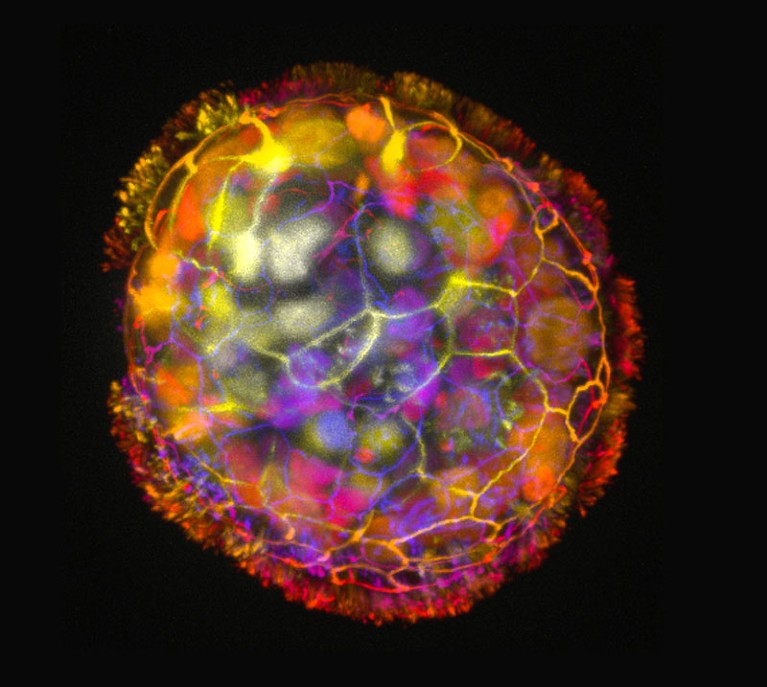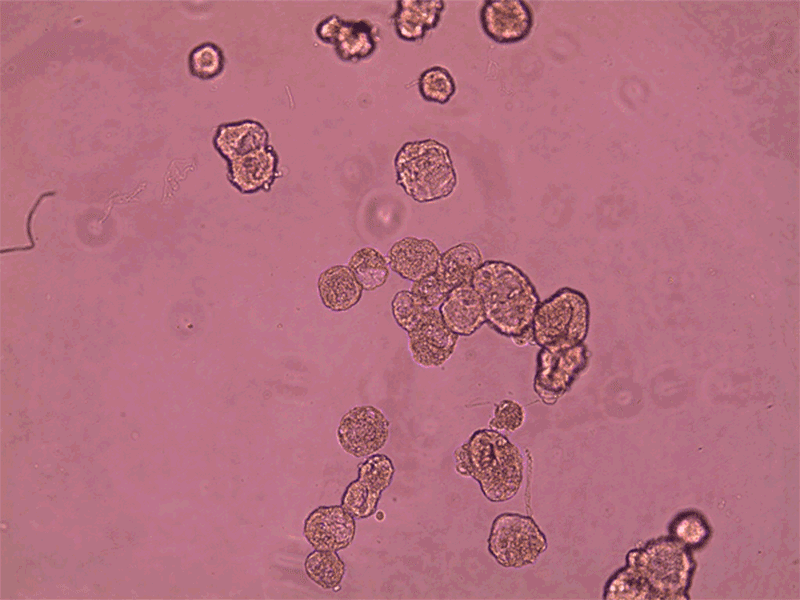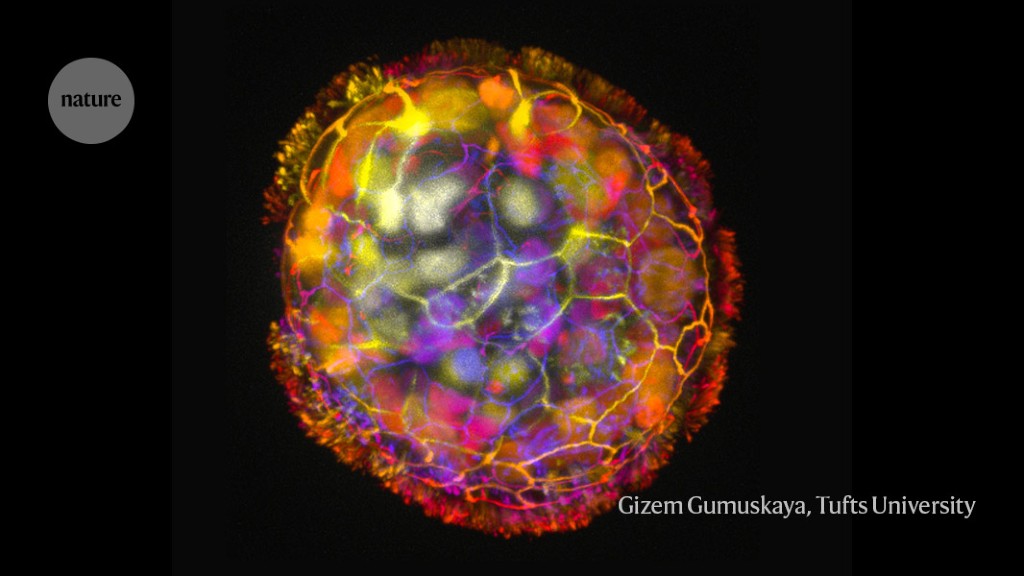
Each anthrobot is made up of a few hundred cells.Credit: Gizem Gumuskaya, Tufts University
Scientists have developed tiny robots made of human cells that are able to repair damaged neural tissue1. The ‘anthrobots’ were made using human tracheal cells and might, in future, be used in personalized medicine.
Developmental biologist Michael Levin at Tufts University in Medford, Massachusetts, and his colleagues had previously developed tiny robots using clumps of embryonic frog cells. But the medical applications of these ‘xenobots’ were limited, because they weren’t derived from human cells and because they had to be manually carved into the desired shape. The researchers have now developed self-assembling anthrobots and are investigating their therapeutic potential using human tissue grown in the laboratory. They published their findings in Advanced Science.
Levin and his team grew spheroids of human tracheal skin cells in a gel for two weeks, before removing the clusters and growing them for one week in a less viscous solution. This caused tiny hairs on the cells called cilia to move to the outside of the spheroids instead of the inside. These cilia acted as oars, and the researchers found that the resulting anthrobots — each containing a few hundred cells — often swam in one of several patterns. Some swam in straight lines, others swam in circles or arcs, and some moved chaotically.
To test the anthrobots’ therapeutic potential, Levin and his colleagues placed several into a small dish. There, the anthrobots fused together to form a ‘superbot’, which the researchers placed on a layer of neural tissue that had been scratched. Within three days, the sheet of neurons had completely healed under the superbot. This was surprising, says study co-author Gizem Gumuskaya, a developmental biologist also at Tufts, because the anthrobot cells were able to perform this repair function without requiring any genetic modification. “It’s not obvious that you’re going to get that kind of response,” she says.

Anthrobots can spontaneously fuse together to form a larger structure called a superbot, which was able to encourage the growth of neurons (not shown).Credit: Gizem Gumuskaya, Tufts University
Going forward, Levin, Gumuskaya and their colleagues think anthrobots made from a person’s own tissue could be used to clear arteries, break up mucus or deliver drugs, with or without genetic engineering. By combining several cell types and exploring other stimuli, it might also be possible to develop biobots — robots made from biological material — that can perform complex functions, such as constructing or exploring tissues.
“Once we understand what cell collectives are willing and able to do, then we can begin to control that not just for stand-alone bots, but for regenerative medicine,” says Levin, including to regrow limbs.

Dr. Thomas Hughes is a UK-based scientist and science communicator who makes complex topics accessible to readers. His articles explore breakthroughs in various scientific disciplines, from space exploration to cutting-edge research.








